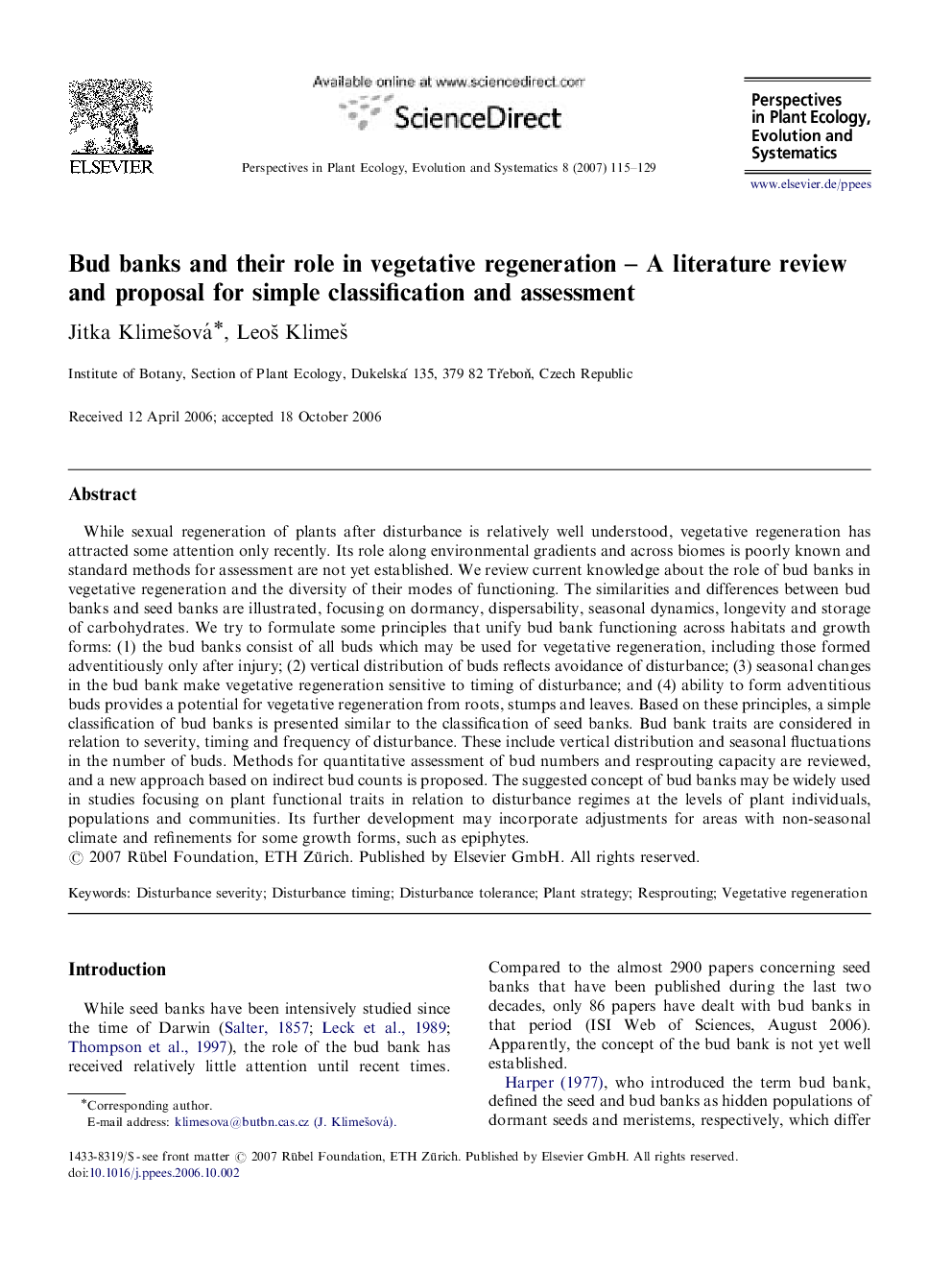| Article ID | Journal | Published Year | Pages | File Type |
|---|---|---|---|---|
| 4401151 | Perspectives in Plant Ecology, Evolution and Systematics | 2007 | 15 Pages |
While sexual regeneration of plants after disturbance is relatively well understood, vegetative regeneration has attracted some attention only recently. Its role along environmental gradients and across biomes is poorly known and standard methods for assessment are not yet established. We review current knowledge about the role of bud banks in vegetative regeneration and the diversity of their modes of functioning. The similarities and differences between bud banks and seed banks are illustrated, focusing on dormancy, dispersability, seasonal dynamics, longevity and storage of carbohydrates. We try to formulate some principles that unify bud bank functioning across habitats and growth forms: (1) the bud banks consist of all buds which may be used for vegetative regeneration, including those formed adventitiously only after injury; (2) vertical distribution of buds reflects avoidance of disturbance; (3) seasonal changes in the bud bank make vegetative regeneration sensitive to timing of disturbance; and (4) ability to form adventitious buds provides a potential for vegetative regeneration from roots, stumps and leaves. Based on these principles, a simple classification of bud banks is presented similar to the classification of seed banks. Bud bank traits are considered in relation to severity, timing and frequency of disturbance. These include vertical distribution and seasonal fluctuations in the number of buds. Methods for quantitative assessment of bud numbers and resprouting capacity are reviewed, and a new approach based on indirect bud counts is proposed. The suggested concept of bud banks may be widely used in studies focusing on plant functional traits in relation to disturbance regimes at the levels of plant individuals, populations and communities. Its further development may incorporate adjustments for areas with non-seasonal climate and refinements for some growth forms, such as epiphytes.
